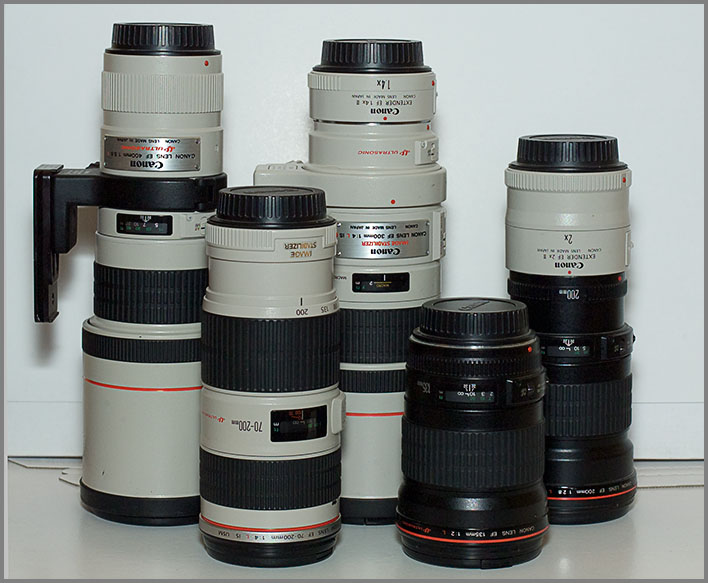 While preparing for my summer trip to Altai, I attended to choosing the telephoto lenses I was going to carry. I needed a regular telephoto lens for shooting water attractions (Katun is very large river and the target can be very far away) and an extra long reach lens for shooting the full phase of the solar eclipse.
While preparing for my summer trip to Altai, I attended to choosing the telephoto lenses I was going to carry. I needed a regular telephoto lens for shooting water attractions (Katun is very large river and the target can be very far away) and an extra long reach lens for shooting the full phase of the solar eclipse.
The goal was to select a 400 mm as a long lens, and as much as possible for the extra long one. After looking around and asking some friends I found the following possibilities for a 400mm with Canon:
- EF 400/5.6
- EF 300/4 + TC1.4
- EF 200/2.8 + TC2
- EF 70-200/4 + TC2
- EF 135/2 + TC2 + TC1.4
Surprisingly, even the last option on the list (the one with two teleconverters stacked) did not seem hopeless: I tried that option for film a while ago, and it was comparable with a 70-200/2.8 with a 2x TC.
Testing Procedure
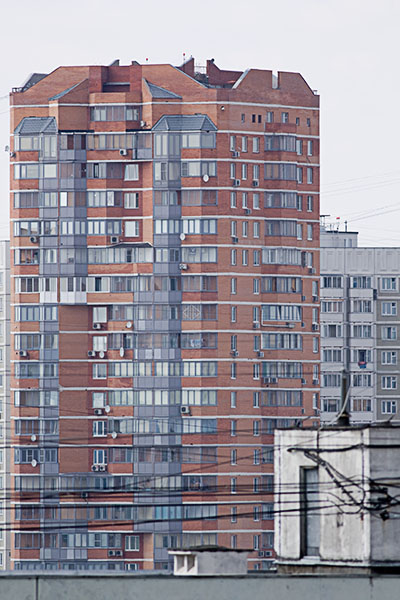 In the modern world it is a standard to test optics against a brick wall. After looking out of the window, I found a suitable one. I don t have a device to measure the distance, but some simple calculations showed that it s about 700-800 meters away (the field of view on a APS-camera is 4 degrees, tangent 1/15, the height of the visible part of the wall is 50 meters).
In the modern world it is a standard to test optics against a brick wall. After looking out of the window, I found a suitable one. I don t have a device to measure the distance, but some simple calculations showed that it s about 700-800 meters away (the field of view on a APS-camera is 4 degrees, tangent 1/15, the height of the visible part of the wall is 50 meters).
I used Canon EOS 450D, for 2 reasons. First, this camera has the largest number of pixels per square millimeter from those cameras I have. Second, I'm going to shoot with this camera for the part of the journey where long lenses are needed - because the camera effectively incorporates a 1.6x teleconverter of its own.
For the shots in autofocus mode - I took three shots (they were almost indistinguishable in focusing). Where the aperture was not wide enough for the autofocus to work, three shots were made with manual focusing. The sharpest shot was selected out of the three.
All shots were post-processed with Adobe ACR (for speed) and then studied under a 300% zoom. Before studying them, an Unsharp Mask with a radius of 2 and amount 30% was applied.
The center and the edges of the shot where the two primary regions of interest for my purpose.
400/5.6 (effective focal length 640 mm)
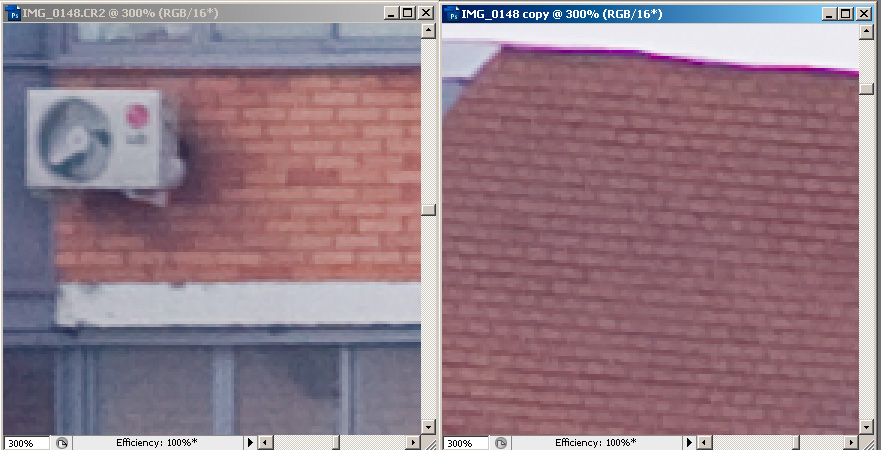 I should say that a 300% zoom sounds quite scary. However, the shot is very good, and is sharp both on the edges and in the center. Also, do not forget that you see individual bricks which are about 750 meters away.
I should say that a 300% zoom sounds quite scary. However, the shot is very good, and is sharp both on the edges and in the center. Also, do not forget that you see individual bricks which are about 750 meters away.
EF 300/4 IS L + TC 1.4x II
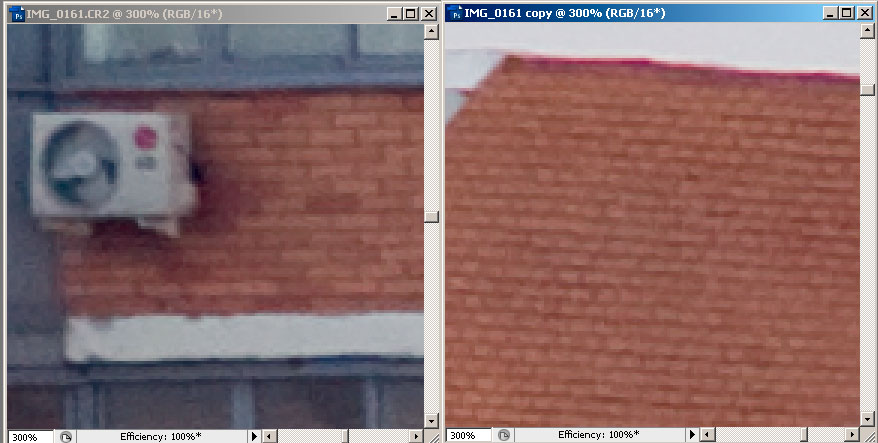 The visual effect is worse, although for me it was satisfactory. It is almost the same in the center, and yes, a bit worse on the edges.
The visual effect is worse, although for me it was satisfactory. It is almost the same in the center, and yes, a bit worse on the edges.
200mm + TC 2x
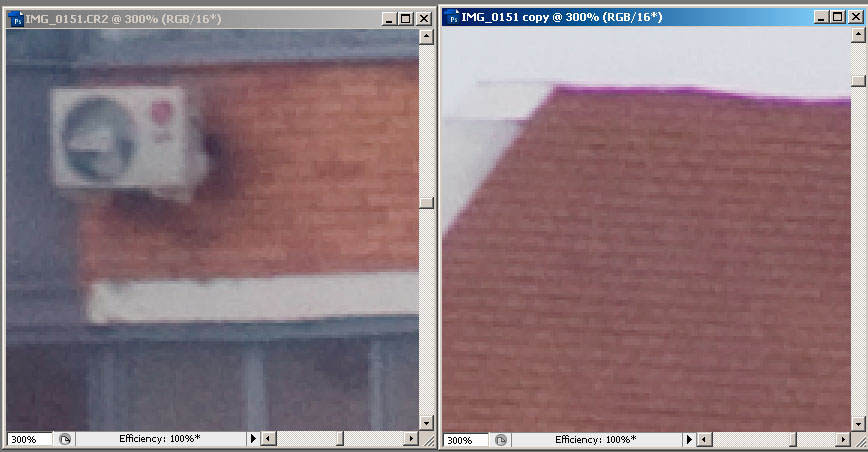 200/2.8 showed to be much worse, and I cannot recommend using it with a 2x teleconverter.
200/2.8 showed to be much worse, and I cannot recommend using it with a 2x teleconverter.
70-200/4 + TC 2x
70-200/4 zoom is much worse (image not show, so bad it is), I would even say unexpectedly bad. It is also possible that all 3 times I could fail to adjust the focus correctly. The zoom with a converter has the aperture of f/8 thus it is impossible to use AF mode on the camera I used for testing.
EF 135/2 + TC 2x + TC 1.4x
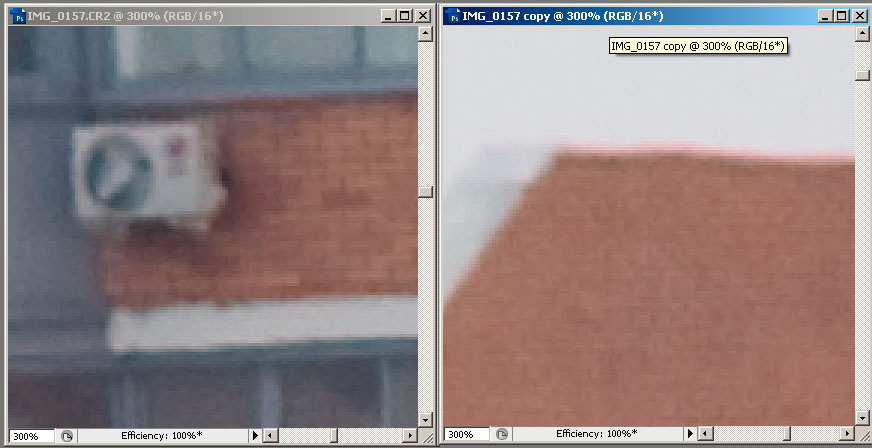 No surprise that the result with two teleconverters used together was pretty washed out. Nevertheless, the result is not a failure, and if you do not use the 400 mm frequently, and are not planning to make prints larger than A4, then this option may be very interesting for you an outstanding telephoto lens as the 135 is and in addition, for a reasonable price (the price of two converters) a good 190/2.8, a sensible 270/4 and a satisfactory 380/5.6
No surprise that the result with two teleconverters used together was pretty washed out. Nevertheless, the result is not a failure, and if you do not use the 400 mm frequently, and are not planning to make prints larger than A4, then this option may be very interesting for you an outstanding telephoto lens as the 135 is and in addition, for a reasonable price (the price of two converters) a good 190/2.8, a sensible 270/4 and a satisfactory 380/5.6
Are there any benefits from teleconverters?
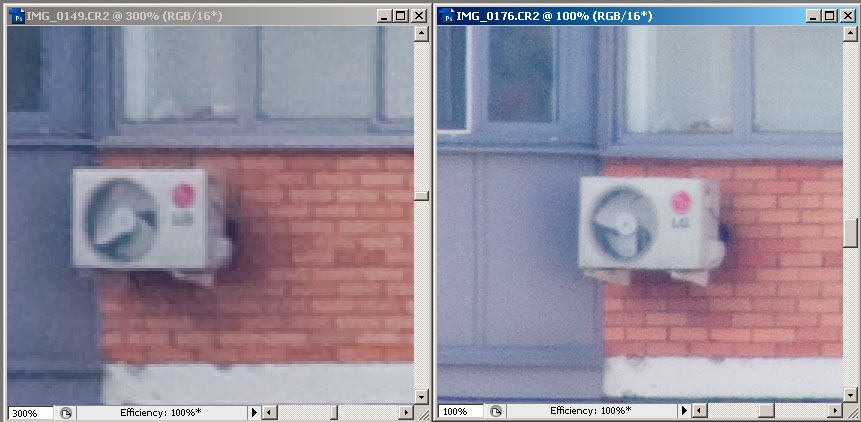 Imagine we have a small object. Its magnified image can be obtained by the cropping of the shot taken with a 400 mm, or we can attach converters and cover more sensor pixels with the object. There is an extreme opinion that converters do not better the picture, but that they merely cut out the middle part of the picture, enlarge it and make it look worse.
Imagine we have a small object. Its magnified image can be obtained by the cropping of the shot taken with a 400 mm, or we can attach converters and cover more sensor pixels with the object. There is an extreme opinion that converters do not better the picture, but that they merely cut out the middle part of the picture, enlarge it and make it look worse.
With an ideal film (sensor) with an infinite resolution and no noise this is actually true. But in the real world teleconverters do make sense. On the picture to the left you see two photos of the LG air conditioner shot from a distance of 750 meters. The left one is shot with EFL 640 mm, (autofocus, choosing the best out of three) and is shown with a 300% zoom. The right is shot with EFL 1792 mm and is shown "pixel to pixel".
The winner is obvious, although the resolution gain is far from 2.8x linear (or, 8x square).
The conclusion
The Grand Prix of the competition a trip to Altai for rafting goes to the Canon EF 400/5.6 lens and two Canon teleconverters.
The consolation prize a mountain hiking trip - goes to the Canon EF 135/2, which I will take instead of a telezoom.

Comments
Canon: How to get 400/5.6
Which teleconverters were used? Canon EF? Mk I or II?
both mk2
both mk2
-- Alex Tutubalin @LibRaw LLC
Add new comment